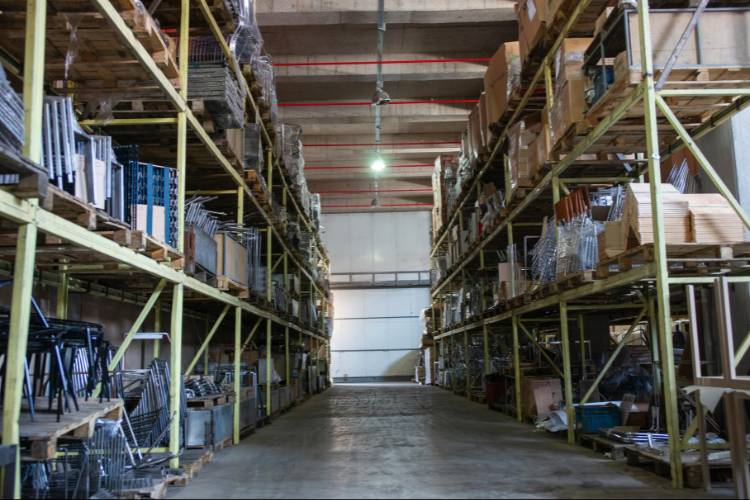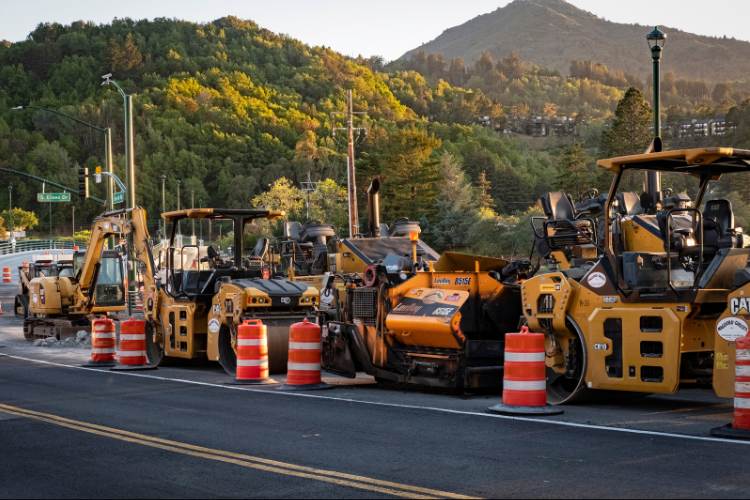If there’s one adage that applies to the construction industry, it’s this: “Hope for the best, but prepare for the worst.” There are risks at every step of a construction project, from safety hazards on the jobsite to factors that influence your finances, like cost increases or delayed payments. If these risks aren’t properly managed, they have the potential to seriously derail a project — and the success of your business. So while it’s beneficial to take on new and bigger projects and plan to deliver the best possible work, it’s just as essential to have an established process for how to manage risks if and when they arise. Learn more about this process, referred to as construction risk management, in this guide.
Table of Contents
What Is Construction Risk Management?
Construction risk management is the process of determining the potential risks of a construction project and implementing procedures to reduce the impact of those risks. This typically involves creating a documented risk management plan that details each type of risk and how it should be addressed, including who is responsible for that particular concern. Having a plan in place at the beginning of the project will allow you to identify and appropriately address risk as soon as it arises.
What Are the Primary Sources of Construction Risk?
One of the first steps in construction risk management is identifying potential risks. In construction, risk generally refers to anything that could delay or add extra costs to your project. There are several common categories of risk that contractors and subcontractors should be prepared to face:
Safety Risk
Construction job sites can be dangerous places, and even if you have an experienced crew, accidents can happen. Safety risks generally encompass any construction site hazards that can lead to worker accidents. By understanding these risks, you can put a plan in place to protect your crews.
Financial Risk
Financial risk refers to any factors that may impact the flow of your finances. Unfortunately, there are many situations that can interrupt your cash flow, including unexpected increases in material costs, delayed payments, competition in the market, and overall economic conditions.
Legal Risk
Legal disputes and issues of all kinds can easily derail a construction project, from meeting regulations and local codes to managing contracts and disputes with subcontractors, suppliers, vendors, and suppliers.
Technical Risk
Even a well-planned project may not be able to avoid some technical risks, like the unavailability of materials or changes to the project scope. Once you begin construction, there is also the chance you may discover design errors, incomplete designs, or inadequate site evaluation.
Project Risk
For any project — even those outside of the construction industry — there are inherent risks including missing deadlines, falling behind schedule, poor resource management, and misunderstandings of deliverables or objectives.
Environmental Risk
There are also risks completely outside of your control, like natural disasters such as floods, earthquakes, fires, and hurricanes. These events can damage any current progress on the project and/or make the construction site inaccessible, which can incur further costs and add delays.
What Is the Risk Management Process?
1. Identify Risks
With an understanding of the broad categories of risks in the construction industry, drill down into the specific risks that you may face within the project. Generally, this is most effectively done by brainstorming as a group during the preconstruction phase. Aim to include a range of stakeholders from across the project, which will allow you to develop a comprehensive scope of all possible risk scenarios. Each stakeholder will bring different experience and expertise depending on their role, as well as knowledge of past projects.
2. Assess and Prioritize Risks
Now you have a comprehensive list of risks you may encounter — but it’s important to realize that not all risks carry the same weight. Some may have a very low likelihood of happening, while others are much more common. The consequences of each risk vary, as well; some may be severe and have the potential to incur high costs, while others may only cause minimal impact.
At this stage, it’s helpful to create a risk assessment matrix, which can help you visualize the impact of each concern and prioritize them accordingly. On one axis of the matrix, evaluate the severity of the risk, ranging from minimal to catastrophic impact. On the other axis, measure the probability of encountering that risk, from rare to almost certain.
That matrix will clearly lay out which risks are probable and severe, which will be the most important concerns to address. The risks on the other side of the spectrum — rare and little to no impact — are less urgent and will require less consideration.
3. Detail the Appropriate Responses
With a prioritized list of potential risks, you can now determine your risk response strategy. This step should detail both who is responsible (the risk owner) and what they should do if the risk arises.
Risk Owner
Establishing a risk owner for each potential concern will help avoid confusion and promote timely action. Without a designated owner, it’s too easy for no one to take responsibility, allowing the risk to continue and possibly worsen.
Response Strategy
Your response to each risk can vary, but generally, it will fall onto one of four main categories:
- Risk avoidance: What can you do to eliminate the risk? For example, if a significant risk is hurricanes, you may decide to avoid projects in hurricane areas.
- Risk transfer: Can you transfer the risk to another party? While this doesn’t eliminate the risk entirely, it can shift the responsibility and liability to someone else. You could, for example, take on an insurance policy or sub out to another sub.
- Risk mitigation: What can you do to reduce the impact of a particular risk? You might, for instance, choose a more expensive but stable supplier, rather than the low-cost, less reliable option.
- Risk acceptance: You also have the option to simply acknowledge the risk and decide to take no action to avoid or mitigate it. In this case, it’s best to have a contingency plan for how to handle the consequences if the issue arises.
4. Monitor the Project
As the project progresses, it’s crucial to continually monitor for risks — both those that you previously identified and new concerns. Over time, you will see that some risks become irrelevant or less probable, while others rise in priority. Continuously monitoring the project will allow you to adjust your strategy, identify and analyze trends (e.g., if project costs are steadily rising), and ensure all stakeholders are updated on current project status and any developments.
What Are Common Risk Management Mistakes?
Creating an Unclear Team Structure
Everyone involved in the project must understand the team structure and who is responsible for which aspects of the project. This is particularly important in risk management, where you must have a designated risk owner for each concern. Otherwise, it becomes too easy for everyone to assume that someone else is managing the risk — leaving it completely unaddressed.
Underestimating Risk Impacts
While it’s easy to feel optimistic at the beginning of a project, don’t underestimate the potential for risks and their consequences. Miscalculating these impacts can lead to prioritizing incorrectly or failing to develop an adequate plan for each concern. To make sure you evaluate correctly, look at all facets of the risk, including cost, quality, and schedule.
Failing to Make Risk Management an Ongoing Process
While the bulk of risk management planning takes place at the beginning stages of a project, it’s not just a box to check — it should be an ongoing process throughout the project. As the project progresses, there is potential for risks to change and new concerns to arise, so schedule regular check-ins throughout the life of the project to boost your chances of overall success.
Managing risks in construction is about mitigating liability issues — but the benefits of the process go much further than that. Building out a risk management plan can improve the efficiency of your work, help projects move along in a safer and more efficient manner, and ensure a quality deliverable at the completion of the project. And over time, that can boost your reputation as business and lead to higher profits — a winning outcome for everyone involved.








